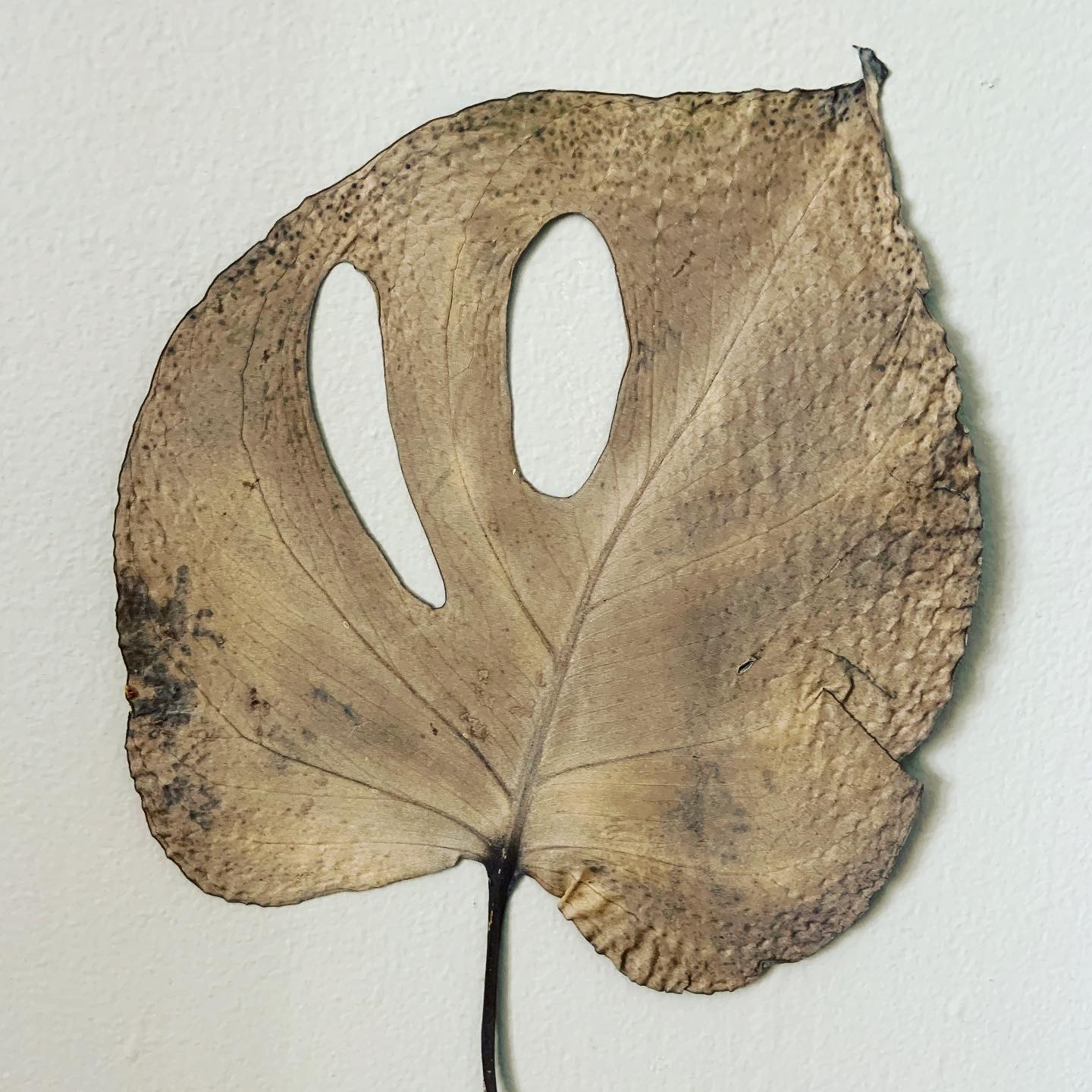
When I was working on my book, Grow Curious, I decided that I would include a pressed leaf or flower from my garden in random copies of the book. If you bought a print copy, please turn to page 87 to see if you got one.
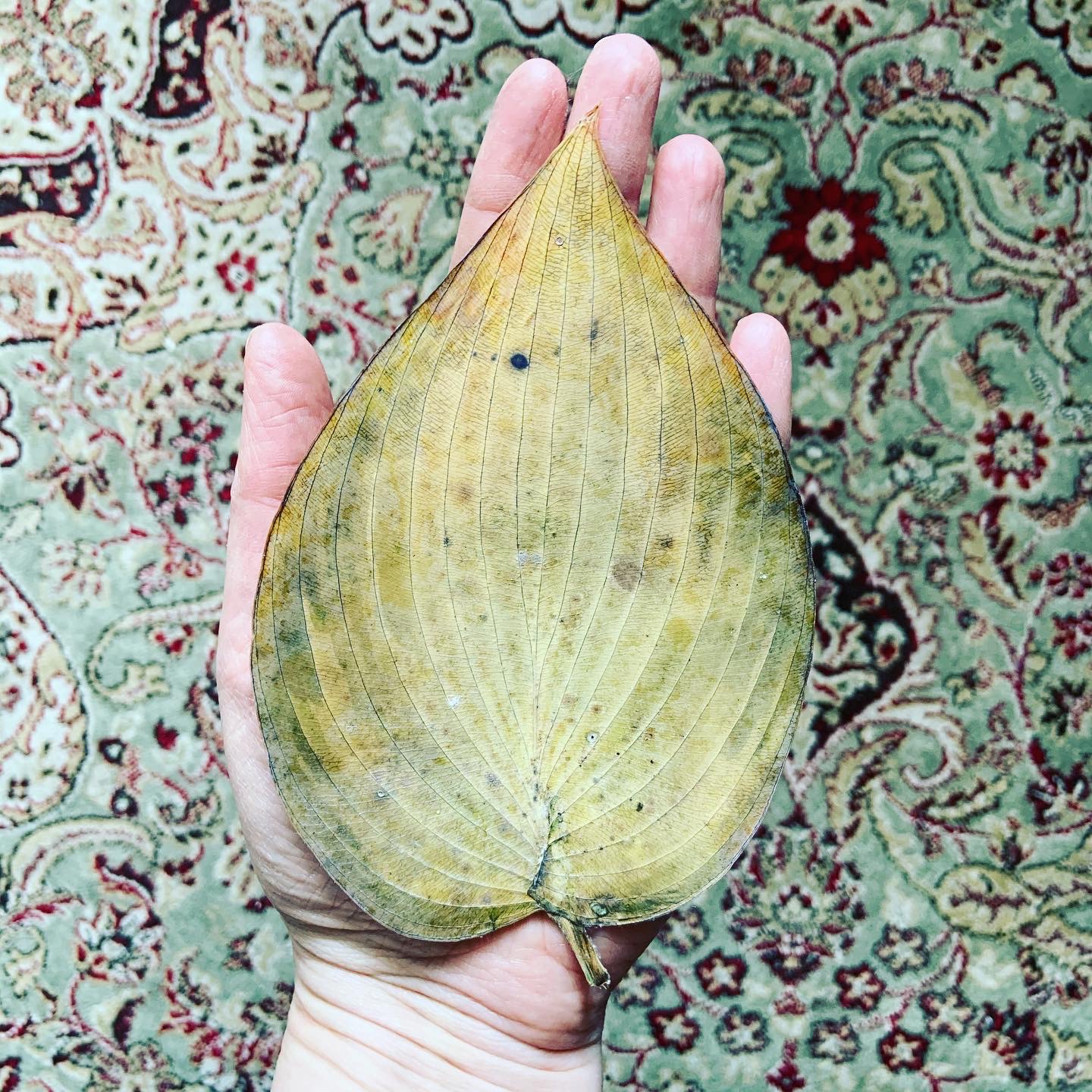
Pressed hosta leaf from my garden.
I’ve pressed many leaves and flowers through my years as a gardener, but pressing in high volume encouraged me — or rather, gave me an excuse — to experiment more than I had before with pressing all sorts of plants and plant parts. I’ve kept it up since and am growing a collection to keep so that eventually I can make an herbarium [a collection of preserved plant material that catalogues the flora of an area] of this garden and my time here.
I’ve found that while a proper flower press is helpful for travel, a really big book works just as well for most plants and is my preferred press to use. It’s faster because you can just tuck leaves in as you, rather than unscrewing each bolt and replacing. I have a specific book that I use most. It’s an over-sized cookbook with thick paper that I didn’t particularly like and meant to purge until I realized it would make a great plant press! I’ve also used an old phonebook, but they’re hard to come by these days!
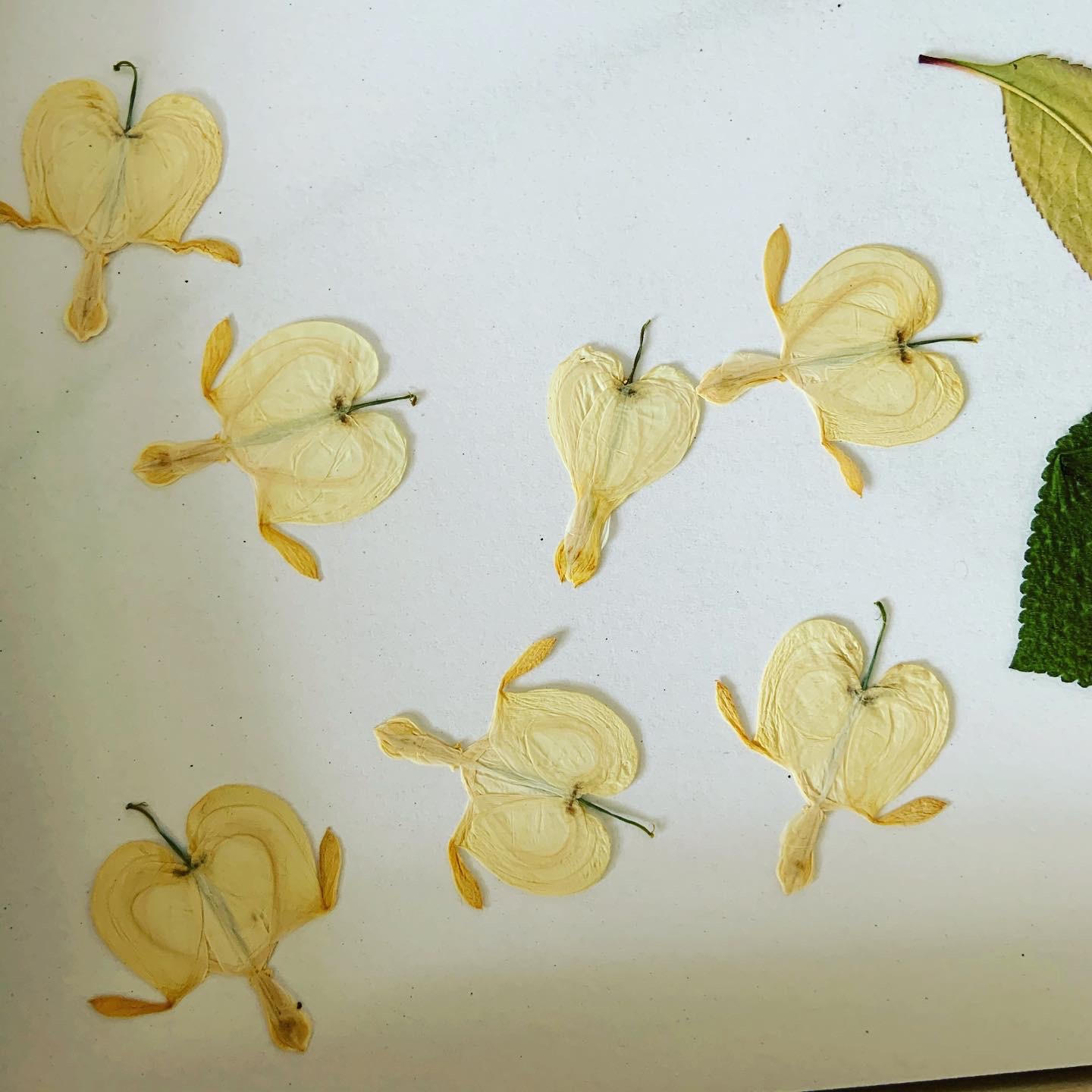
White bleeding heart flowers (Dicentra spectabilis). These are special to me since my friend Sakura gave this plant to me many years ago as a seedling just days before we lost her in a car accident.
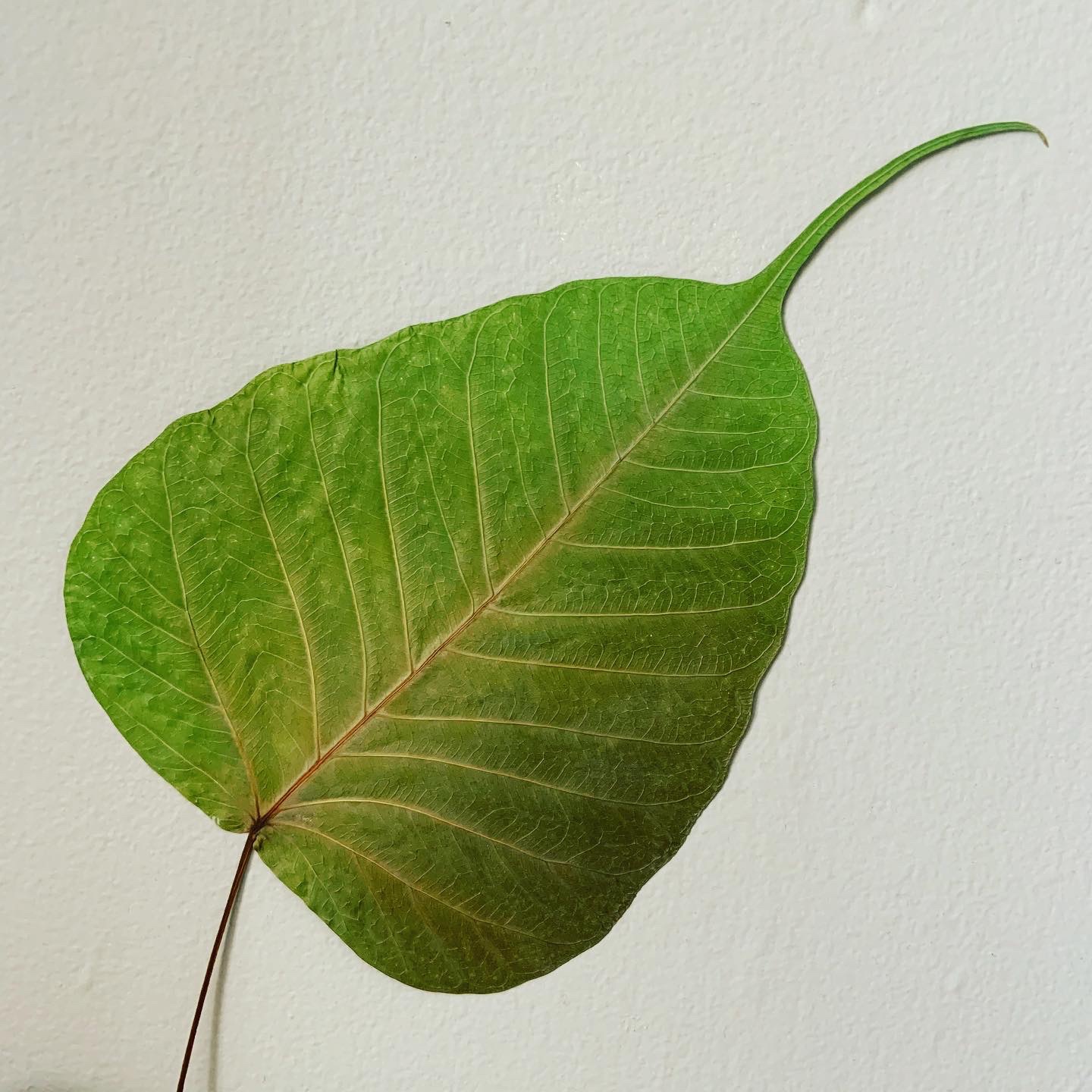
Pressed leaf of my Bodhi tree (Ficus religiosa).
I place a few pieces of paper around leaves to absorb the moisture that is expressed through the drying process and prevent sticking. Plain copy paper is fine for most leaves, but a an absorbent paper such as newsprint (cheap) or blotting paper (more expensive) can be used when there is more moisture inside the leaves. In the case of thicker leaves (or flowers), I don’t press too hard to begin with, gradually adding more weight on top in the form of several big books stacked one at a time. Too much weight all at once can smash the liquid out and make the plant parts permenantly stick to the paper.
I have had some success with this slow method when pressing thicker flowers like tulips or daffodils, but overall a press is preferable since it is easier to distribute the weight/pressure equally. I have 2 small presses similar to this one, but have had plans in my head for about 15 years to make a larger one. I may just eventually give in and buy something like this. I think straps are better than corner bolts at a larger size because of the distribution of weight/pressure. Corner bolts means there’s no weight pressing in the middle, which can be an issue with thicker plant materials. I don’t have a microwave and have never used a microwave press so I can’t speak to their efficacy.
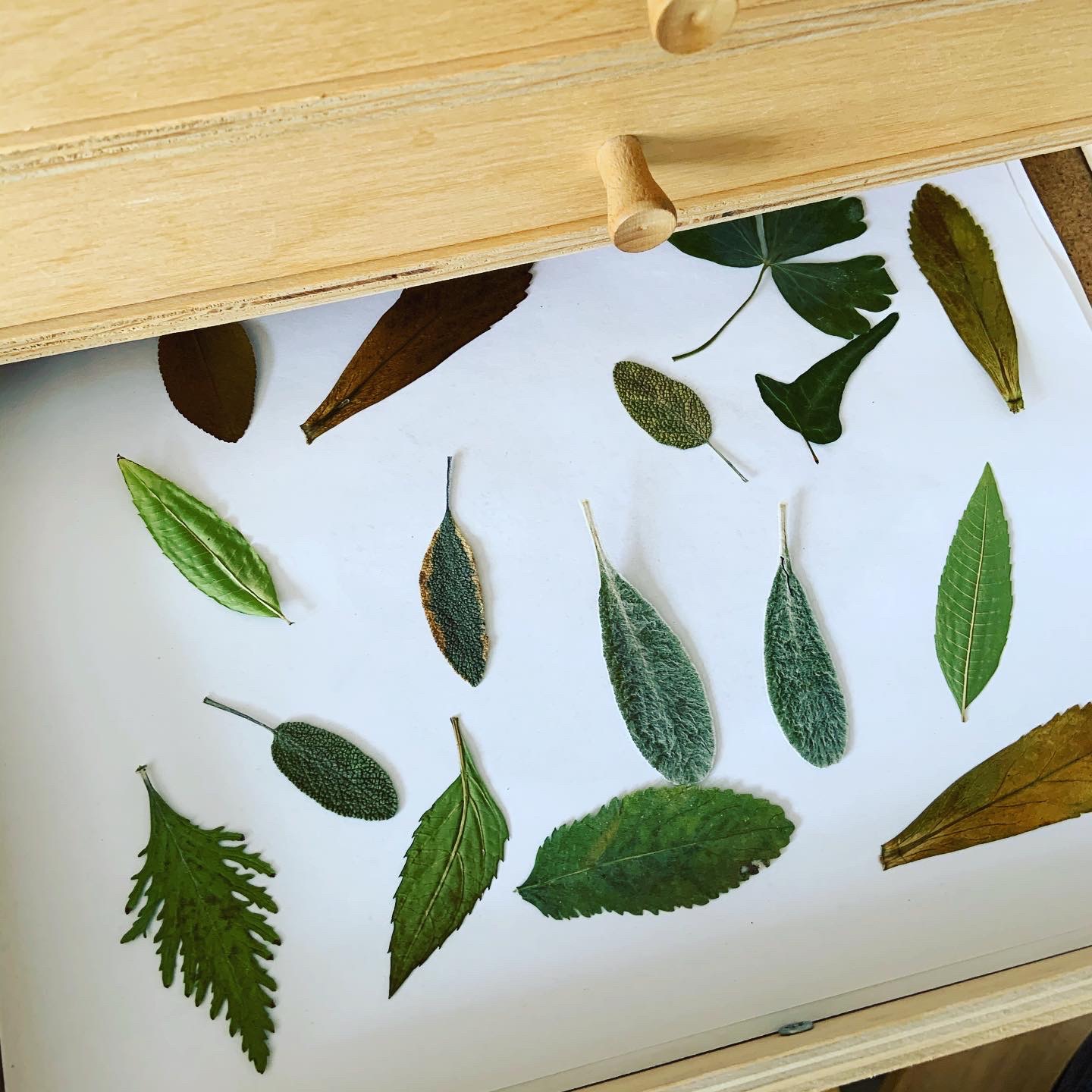
Other Tips:
- Collect plant materials on dry days after the morning dew has evaporated.
- Books work best for most leaves and thinner flowers such as pansies, aquilegia, and bleeding hearts that aren’t too squishy.
- “Drier” leaves from plants such as Japanese maple, gingko, or sage are much easier to press than the thicker, wetter leaves of tropical houseplants.
- Do a bunch of plants at once if you can. It’s better to do a bunch and then leave them be. When I do a new batch, I usually start again with another book or press and wait for the first batch to dry before removing them and reusing the book.
- I do reuse the blotting paper many times over; even regular copy paper can usually take many uses.
- I store my pressed materials in a flat file drawer unit with sheets of paper between them to make removal easy since they are so delicate. See pic above
- I bought herbarium strips for mounting from this etsy seller.
* The pressing at the top of the page is a small Monstera deliciosa.
———————–
Please note: This post contains affiliate links.
HA! NOW I have a reason to rescue all those dated encyclopedias I see at books sales! I KNEW I’d find one! :-)
I love these. (They remind me that I have no clue in which book I pressed poppy petals…) I don’t know what to do once I have dried pressed flowers or leaves (aside from letting the kids have them, which means they’ll end up in the hens’ compost, sigh…), but I like them. (Huh. That’s true for so many of my projects! I enjoy the doing but have no use for the result: the point was to have fun doing.) Thank you for the inspiration: I’ll endeavour to press more plants this spring/summer (still a meter of snow here).
Forgot how lovely pressed flowers can be, thanks for the reminder! Also, nice to see a mention of Sakura – I knew her from the ygg forums. Her death was my first experience feeling grief for the loss of someone I had only known virtually. Is the memorial plaque we had made for her still there?